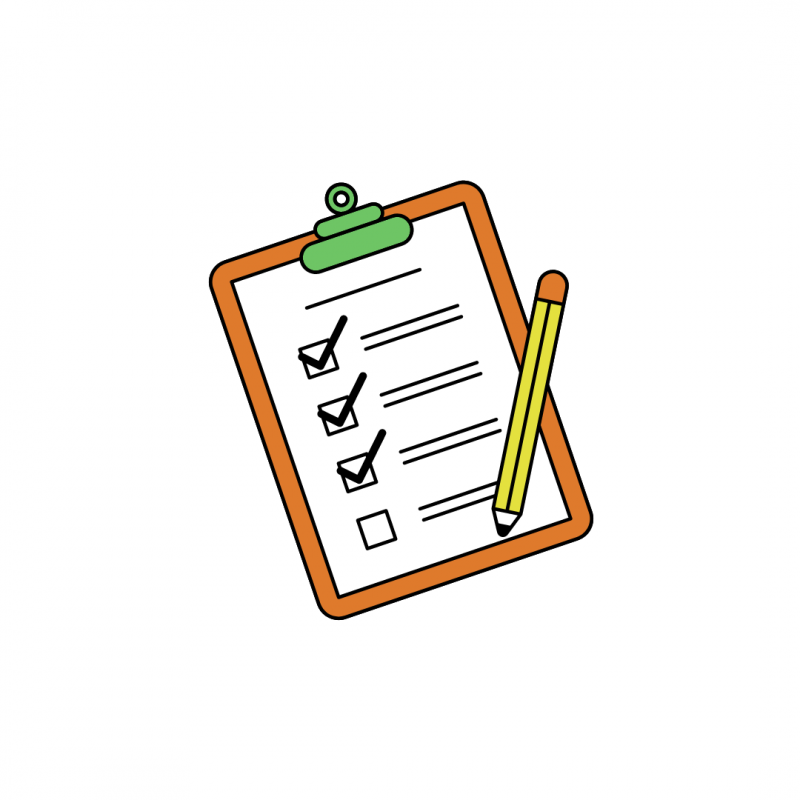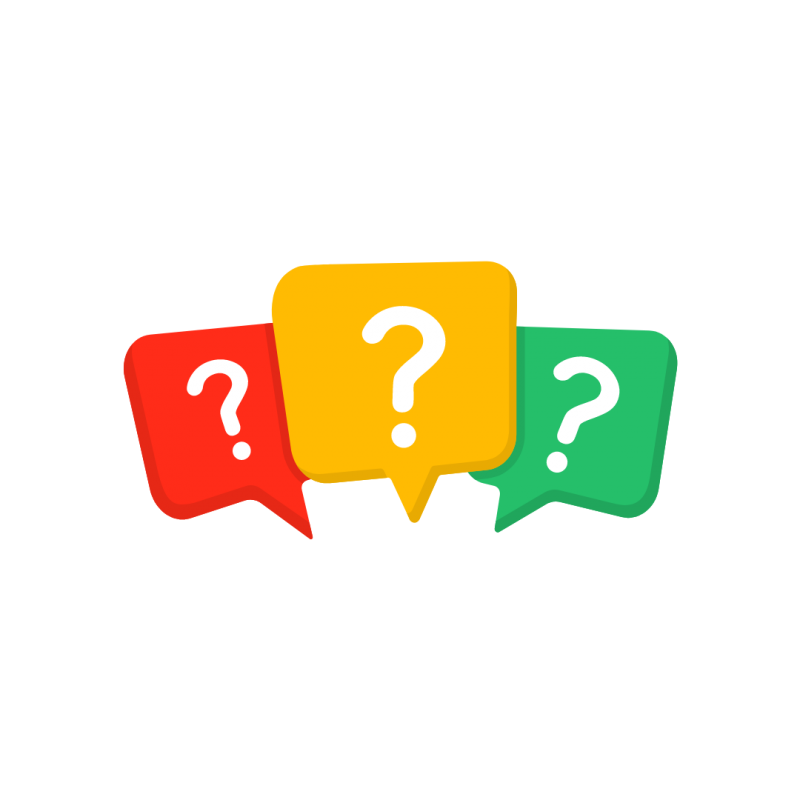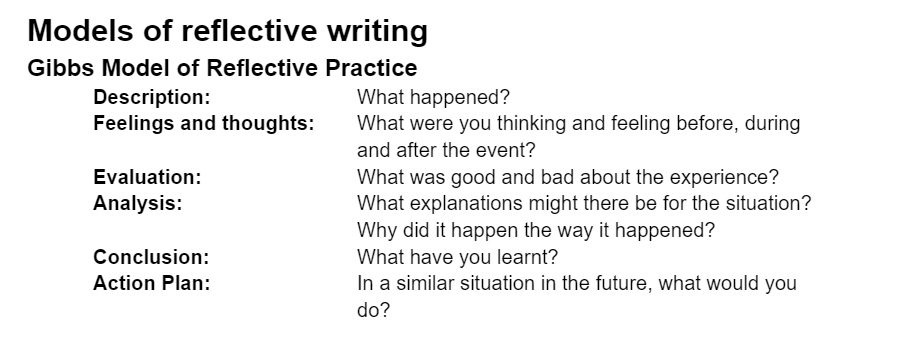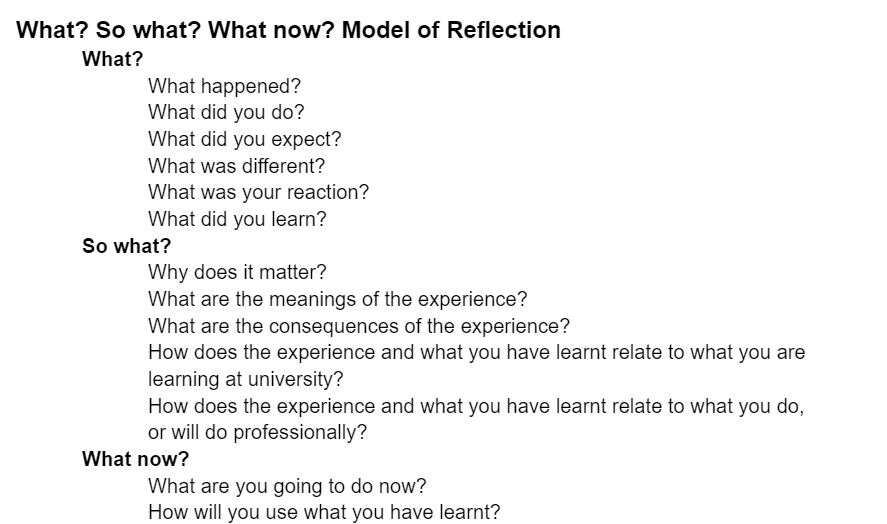4. WRITING
You are prepared to begin writing once you have examined your assignment question, located, read, assessed, and taken notes from reliable sources.
It is necessary for you to combine your ideas with those from your sources, making sure to acknowledge (cite) the contributions of others. Recall that there are frequently multiple approaches or interpretations of a given subject. After you have written a little, you must go back to your original research method and revise your thesis statement (your argument).
This module’s sections will provide you with details on the different types of assignments you might be required to write, including case studies, essays, reports, reflective tasks, and literature reviews. To locate the information that is important to you, use the headings at the top of the page.
a) Assignment type and objectives
b) Essays
Types of Essays
Writing an essay entails presenting a case — also referred to as an “argument” — for a specific standpoint, analysis, interpretation, or collection of data or guidelines.
Essays come in a variety of forms. Below is a list of some of the most common types:
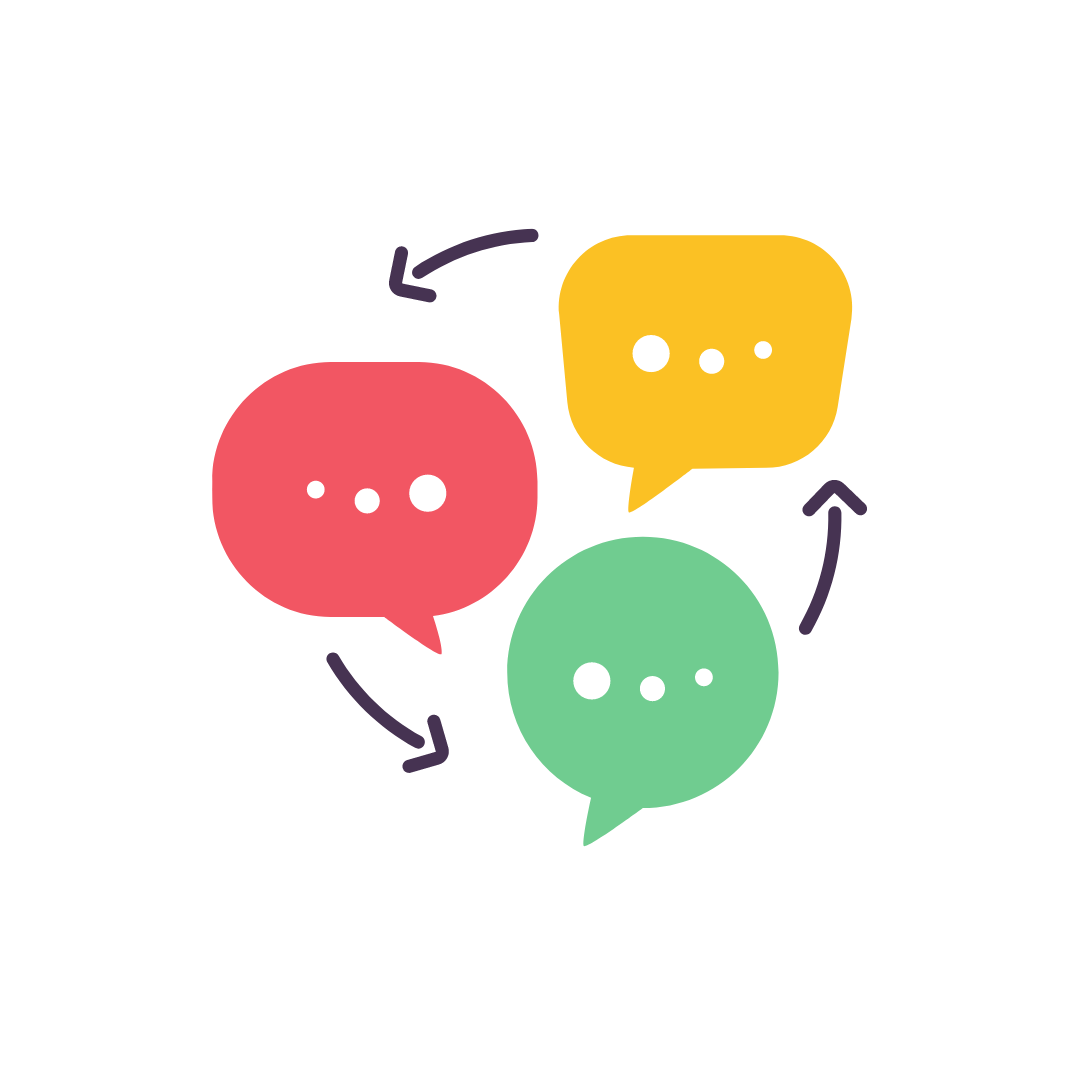 | Argumentative This kind of essay assignment is the most typical one you may encounter in university. You will present your reader with an argument in answer to the essay question, which you will then support throughout the essay. |
 | Descriptive Descriptive essays concentrate intensely on a single subject or problem. For instance, if your essay was on dogs, you would go into as much detail as you could about the many breeds, the history of the species, typical characteristics, and so on. |
 | Narrative An essay that tells a story is called a narrative essay. You can write in the first or third person and utilise expressive, descriptive language in this kind of essay |
 | Compare and contrast As the name suggests, you are examining the parallels and discrepancies between two or more events, objects, or problems in this kind of essay. |
 | Analytical A detailed analysis or critique of anything is done in an analytical essay. You may, for instance, examine a play to determine the themes, characters, and language that are employed to communicate meaning. |
Essays can take many different forms, but they all aim to convey and convince the reader of a position or subject.
Thesis statements
💡 The thesis statement, found at the end of the introduction, summarizes the main idea of the project in one or two sentences. It previews the paper’s content and guides the reader on what to expect. Recognizing thesis statements in textbooks or articles helps understand their structure and sets the tone for the discussion by combining various aspects of the subject and stating the author’s position or conclusions.
You will need a thesis statement for any kind of essay you write.
You might already know the remark you’re going to make before you begin your project. This draft statement should be easily accessible while you conduct research, read, take notes, and start drafting your middle paragraphs. By using your thesis statement as a guide, this helps you stay on track. To help your reader understand where you are taking them with this assignment, you keep improving your thesis statement as you write more of it. You want it to be simple and straightforward. Your thesis statement and the supporting details in each of your body paragraphs must always be related.
Draft Thesis Statements
Making a draft thesis statement based on how you understand the assignment question could be helpful. Your reading, research, note-taking, and assignment writing will all be concentrated on this. Writing your thesis statement in the form of a periodic phrase, with the major concept coming at the end, is a smart approach. Following, you will see a few instances of this.
Essay Structure
General Structure
Generally speaking, an essay consists of an introduction, a body, and a conclusion. The word count given for your essay will determine how many and how long of your paragraphs are.
To write your essay, stick to this structure.
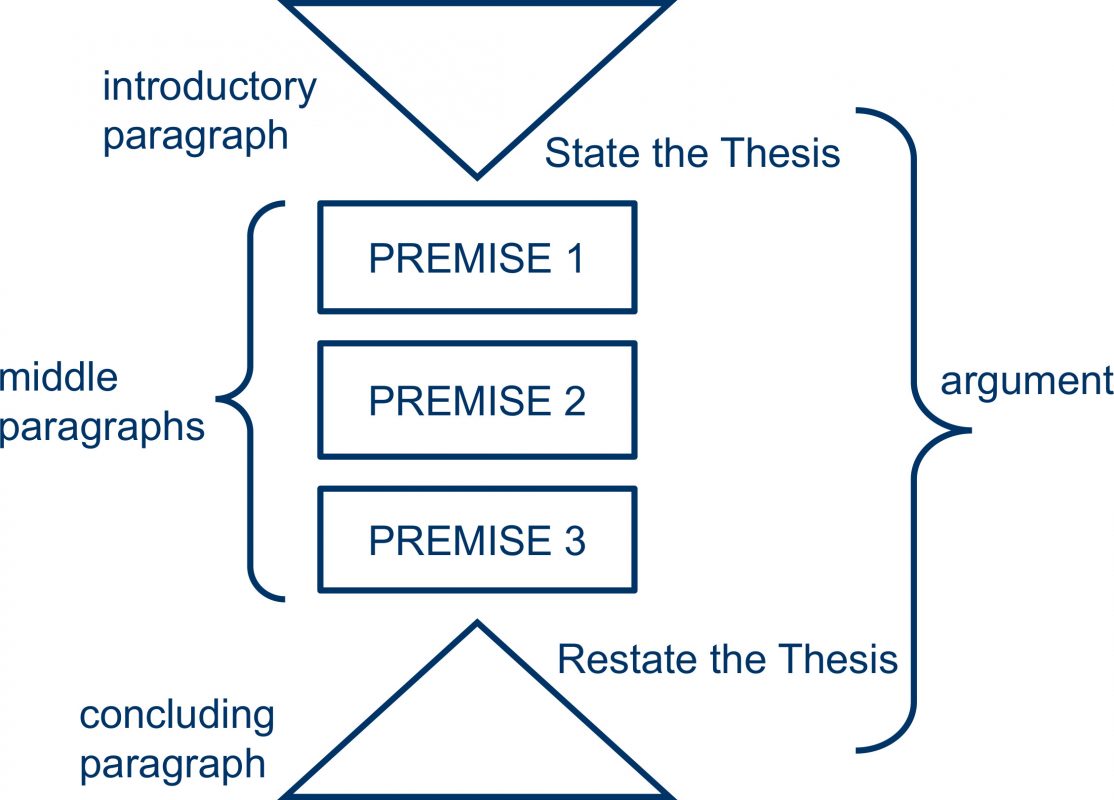
 | Introduction What information is necessary for the reader to fully understand the argument you will make? Provide some background information about the topic of your paper to help the reader understand why it is relevant. In the thesis statement, summarise the main concept of your essay. |
 | Body (middle paragraphs) In each body paragraph, provide one key idea and provide explanation, examples, and other supporting details. Make sure the reader is persuaded of the accuracy of your thesis statement by using the paragraphs to support it. Make connections between the paragraphs to help the reader follow your reasoning. |
 | Conclusion Summarise the most important ideas of the body, restate your thesis, and close with a final statement to the topic. Every body paragraph has a distinct “premise” that contributes to the larger argument you are making. |
Each argument must be proved by reliable data and explained in terms of its significance and relationship to the larger subject. To ensure that your essay flows logically and makes sense to your reader, you must ensure that these premises relate to one another.
Paragraph Structure
Study the structure of paragraphs and essays by working through these exercises.
The body of your essay is created and your thesis statement reinforced in the middle paragraphs. You are more prepared to create an opening paragraph, or the introduction, that presents your case to the reader once you have built it via the middle paragraphs.
The structure of a middle or body paragraph, which is made up of the middle sentences, is comparable to the structure of an essay as a whole. The PEEL paragraph writing technique, which is frequently taught in schools and colleges, will be covered in this section.
 | Point The essential idea of the paragraph is stated in the first sentence, which also occasionally makes a connection to the one before it. This is also known as a “topic sentence” at times. |
 | Explanation A sentence or two that provides clarification on the paragraph’s topic sentence or key point and how it relates to your argument. |
 | Examples and/or evidence Typically, this consists of a few words that reinforce the main assertion with examples, proof, and facts. Make sure you cite the relevant sources to support the claims you make. |
 | Wrap sentence or linking sentence The last sentence summarises the primary idea of the paragraph, restates it, and may hint to or introduce the subject of the following paragraph. |
Each argument must be proved by reliable data and explained in terms of its significance and relationship to the larger subject. To ensure that your essay flows logically and makes sense to your reader, you must ensure that these premises relate to one another.
Example paragraph:
c) Reports
💡 One of the most common sorts of assignments you may encounter in college is the report. They are usually focused on a particular event, issue, or experiment and are extremely detailed and well-researched. Reports often address the who, what, where, when, why, and how of a given scenario or problem.
There are several ways in which essays and reports differ from one another, one of which being structure. Reports can be divided into several portions that can be read independently of one another, whereas essays must be read in a straight line from start to finish. To make the document easier for the reader to navigate, some parts have headings and subheadings. You can be expected to produce a variety of reports during your time in university.
- A general report – covering a specific topic or issue
- A laboratory report – outlining an experiment you or your group has undertaken
- A scientific report – a long-form report that outlines an experiment as well as the theory in the broader context of the chosen field.
How to write a report
Reports are often written with objectivity and include information and facts rather than opinions. Though, unlike essays, reports may use dot points to quickly convey information, they nevertheless frequently use formal language.
Prior to writing a report, you must:
- Read literature and research on the subject, including biographies, journals, statistics, interviews, and news items.
- Examine and evaluate the data you come across.
- Arrange your thoughts on the subject into important conclusions and insights.
- Think about the steps you would suggest taking to address the implications of your results.
Structure of a report
Test your knowledge:
According to the kind of report that needs to be prepared, the structure will vary, but usually, a report will contain the following:
 | Title page, which contains: – The report’s title, which expressly specifies its subject – Complete information on that person or people the report was created for – Complete identity of the individual or people that wrote the report – Date of report submission, if you are not presenting it; alternatively, date of report presentation. |
 | Abstract or executive summary One of the most crucial parts of the report is the abstract. If your report is published, it will be read by a far larger audience than those who read the entire document, therefore it must contain enough information to motivate readers to continue reading. Writing your abstract should be the final step, even if the audience will read it first. This will enable you to provide a short and clear summary of the information in your report. An abstract should typically be between 100 and 200 words, or no more than 10% of the report, depending on its length. An abstract seeks to: – Provide a brief overview of the whole report – Give concise, complete, specific and self-sufficient information that can be easily understood – Offer recommendations for executives and managers to base their decisions on. |
 | Table of contents The reader can easily browse to the sections that are most relevant to them by using your table of contents, which will also provide them an overview of the report’s layout. Your report can be formatted in either the more popular decimal system or an alphanumeric system. View the two distinct styles in the examples provided below. To make the information easier to read in chronological order, both tables are separated into headings and subheadings. Example: decimal system vs. alphanumeric system 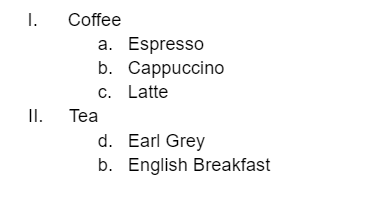  |
 | Introduction In your introduction you will: – Give some prior knowledge about the subject. – Indicate the report’s objective. – State the extent, taking into account any restrictions. – Describe the techniques used to obtain information – define key terms. – Tell the reader what will be discussed in your report. – Provide an overview of how the material will be delivered to the reader. Your literature review of any publications you used for your report will also be included. Literature reviews will be discussed later in this session |
 | Discussion or body – the content Your report’s purpose will determine what it contains. If at all possible, your report should include primary sources (such as observations and interviews) in addition to secondary materials that explain background information and theories. Guidelines for the usage of primary and/or secondary sources will be provided by your lecturer. You should go into additional depth about the procedures you used for your inquiry, including what you did and why, as well as any problems you ran into. You will clarify the research findings and explore the consequences in the body of the article. To ensure that your report is read by the reader in manageable chunks, make sure to clearly divide your main ideas and concepts into headings and subheadings. Your report’s body will include the following sections: – Method (what was done and how?) – Results and analysis (what happened? Why did it happen?) – Discussion (what are the implications of this in the broader context of the topic?) |
 | Conclusion The main ideas you discussed in your discussion will be summed up in your conclusion. In order to do this, you must: – Put your observations, conclusions, and analysis in context. – Remind the reader of the information you provided in the body of the text (i.e., the consequences -or issues this raises, the things you studied and learned, etc.). – Promote a feeling of accomplishment. The conclusion is a summary of the points you have already made, so make sure you don’t add any new information. |
 | Recommendations Consider this a plan of action for resolving or improving the problem. Make your suggestions as realistic as you can, and indicate specific steps that the relevant parties could take to implement them. |
 | Appendix/appendices You can add more information in this part that relates to your issue but did not fit in the report’s body. This can include raw data gathered during your inquiry as well as graphs, tables, and photos, etc. |
 | References The sources you used for your report must be properly cited, just as in other academic work. To determine which referencing style is appropriate for your assignment, see your unit outline or consult your lecturer. For information on the various referring styles and examples of their application, see the Library’s citing guidelines. |
Writing Style
Reports often use passive voice, especially in scientific studies, to focus on actions rather than individuals. More on active/passive sentences in this module. Assume readers may be unfamiliar with the subject and provide background knowledge and definitions in broader reports. Technical language is suitable for scientific/technical reports, assuming familiarity with procedures and jargon. Abbreviations should be spelled out first, then in brackets, e.g., “The World Health Organisation (WHO) recommends…” Keep audience and purpose in mind throughout the writing process for relevance.
Comparison of Essays and Reports
✅ Report writing checklist
Use this checklist, along with your assignment guide and marking rubric, to ensure you have covered the main requirements of a report.
- The title includes keywords
- Your abstract concisely summarises the contents of your report
- Your table of contents corresponds with the report content and page numbers
- Your introduction provides context for your topic
- The purpose and scope of your report is clearly stated
- Acronyms and abbreviations have been defined
- The discussion is organised logically and contains all relevant information
- All facts and information are correct
- You have stated the limitations and assumptions
- Your results relate to the data presented
- Your conclusions interpret, analyse, and evaluate the results or research
- Your recommendations are appropriate and clearly explained
- All in-text and end-of-text graphics are relevant
- All appendices are numbered and titled (if applicable)
- All sources are correctly cited with in-text references and a complete reference list
- Your spelling, grammar, and punctuation is correct and consistent
- Your report is clear, concise, and has been written at an appropriate level for your audience
- Your report is consistent in form, font, and layout.
d) Reflective Writing
💡Through an informal writing process, reflective writing enables you to examine your own life experiences, knowledge, thoughts, feelings, values, and beliefs.
Your reflective writing exercises and assignments will allow you to investigate how you are experiencing and reacting to your life as both, a VGU student and as an individual outside of university. By encouraging you to ponder and dive deeply into subjects, reflective writing helps you develop your critical thinking abilities.
How to write reflective
Writing reflectively involves more than just describing things or enumerating details. Good reflective writing tells the complete story by using the five W questions — who, what, where, when, and why — completed by “how”, to highlight the most important details of a given situation or subject.
As you learn, genuine reflective practice requires you to consider your feelings about it. It needs self-assurance and honesty while discussing your expectations and experiences. It involves recognising both your achievements and your weaknesses and figuring out what you may do better moving forward.
One of the few types of academic writing that lets you write in the first person is reflective writing, which is all about YOU and YOUR experiences. It’s regarded as a less formal kind of academic writing. However, it may still require formal language and references to relevant texts.
Reflective writing structure
Your reflective work may follow an essay format or a more journal-style format. As with any assignment, make sure your reflective writing makes sense and thoroughly addresses each topic before going on to the next. Your lecturer will give you instructions on the kind of assignment they expect you to write, or they might let you choose the format you wish to use.
Models of reflective writing
Reflective writing scenarios
Listed below are topics or scenarios you may be required to reflect upon throughout your studies.
e) Case Study
A case study is a research method that examines a topic using a representative individual, group, or sample. It can be based on a real or fictional scenario and explores theories or approaches relevant to your field within the broader context of your academic subject.
Reports and case studies both use subheadings to organize sections, allowing readers to navigate specific topics easily and understand gathered facts on an issue.Case studies often include both quantitative and qualitative data for thorough analysis of the topic at hand.
Case study structure
Most of the time, a case study assignment will be written in a report-style format. Your lecturer might, however, ask you to use creativity and format your case study as a movie, poster, or infographic. The sections stated below will be included in your case study’s structure, regardless of the format you choose.
 | Introduction This section should include an introduction to the topic/issue’s background as well as any relevant literature or research. Keep in mind that you won’t be able to cover every facet of the topic in a case study because it’s a condensed view of a representative sample. If your research is examining how a certain disease or illness affects a person’s lifestyle, you might want to focus only on individuals in that nation or area instead of the entire world. |
 | Discussion In essence, you will be expanding on the body of knowledge that has already been published on the subject by summarising it in this part. Like a literature review, your discussion section enables you to refresh the reader’s memory on the subject by summarising the relevant information and enabling them to understand the background of your investigation and any conclusions you draw. |
 | Results/data Your data and results must be precise, clear, and short. It can be necessary for you to present data from periods prior to a particular event, and then evaluate the effects of the event on the data. Your reader will understand this information better if you use graphs, tables, and figures. |
 | Conclusions/recommendations You pull everything together in your conclusion, much like in previous assignment types. You will also suggest activities that the organisation or group should do, as well as additional research that should be conducted, in this area. Provide detailed advice that outlines what needs to be done, when, by whom, how it should be done, and why you think it will work. |
 | Appendices (if required) Include any figures, tables, images or diagrams that you have referred to in your case study. |
f) Literature Reviews
💡A critical evaluation of published sources in a particular field of research is called a literature review. A literature review can be included in a thesis or dissertation, or it can be a stand-alone research study that is published in a peer-reviewed journal or serves as a report for an initiative that receives funding.
A review of the literature:
- finds, explains, assesses, and summarises relevant literature or recent research on a subject.
- describes the evolution, understanding, and development of knowledge in a field.
Literature reviews come in two common types: narrative and systematic.
A narrative literature review provides an overview of relevant papers on a specific subject, often used in thesis writing (PhD) to contextualize research. On the other hand, a systematic literature review ensures reliability, impartiality, and trustworthiness by selecting works that meet specific criteria. The chosen material is treated as data to be analyzed, with the review including the methodology used to gather data, making it easier for readers or researchers to locate referenced studies.
| Narrative literature review |
|---|
| May have quite a broad scope within your field of study |
| Does not include methodology |
| General appraisal of the current literature and the lack thereof; suggests future research |
| Systematic literature review |
|---|
| Responds to a very specific research question |
| Includes methodology (how you gathered your research, including what search terms and databases you used) |
| Comprehensive exploration of the current literature relevant to the research question |
Literature reviews structure
| Introduction |
| Body |
| Conclusion |
| introduces the topic and its importanceincludes the scope of your research questionidentifies the search criteria |
| is organised into sections (such as methodologies, theories, discussion)demonstrates synthesis (shows how the sources are connected and contribute to themes) |
| summarises the main agreements and disagreements in the literatureidentifies areas for further researchprovides your overall perspective on the topi |
Keep in mind to:
- Cite all of your sources, concentrating mostly on the literature
- Compare the claims, theories, methods, strategies, and conclusions. Regarding what, the writers concur?
- Contrast the different claims, motifs, and strategies. What are the main points of contention or discussion?
- Examine the literature critically. Which justifications hold greater weight? Why? Which techniques or strategies are the most appropriate, genuine, or trustworthy?
- Make a connection between the literature and your own field of study or inquiry. How does the literature influence the way you write?
g) Structure & mechanics
💡Assignments follow a narrative structure with an introduction, main body, and conclusion. The introduction provides background information, while the conclusion summarizes key points or calls for action. The main body contains detailed information relevant to the assignment question.
Academic writing should be formal, clear, and precise, usually in active third person or passive voice. Reflective writing is an exception, allowing personal opinions. All assignments require clear organization for reader understanding, often using subsections and headings in reports and case studies.
Essays follow a specific structure:
- Paragraphs form essays.
- Sentences form paragraphs.
- Sentences follow specific word and punctuation rules.
Essays are like houses, with paragraphs as bricks and the overall essay as the house.
Contact for Writing skill support
Email to LCFY (Language Center and Foundation Year): fy@vgu.edu.vn
Bibliography
Curtin University. (n.d.). Library | Curtin University, Perth, Australia. Retrieved April 15, 2024, from https://www.curtin.edu.au/library/
Copyright
Unless stated otherwise, all VGU Library content in any shape or form is covered by a Creative Commons Attribution ShareAlike 4.0 International License. Kindly give credit to VGU Library for any use of the content and include a link back to our library homepage.


